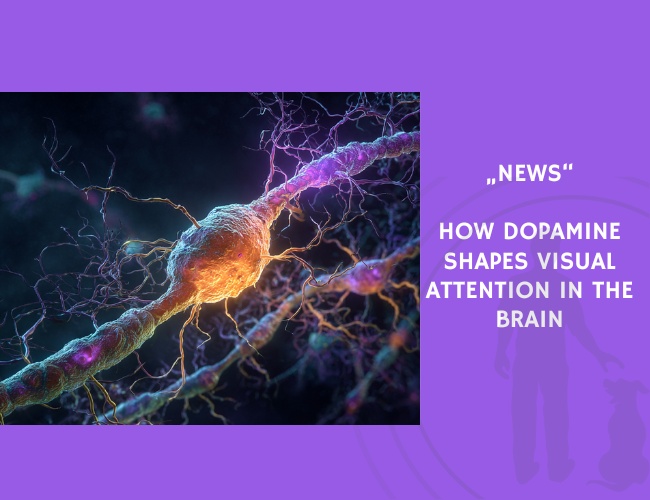How does dopamine steer your eyes? A new review explores how the brain’s dopamine system modulates visual attention via the prefrontal cortex — and what we still don’t know.
Visual attention is more than just seeing — it’s the brain’s way of deciding what matters. At the core of this decision-making is the prefrontal cortex (PFC), and increasingly, researchers are looking to one key neuromodulator: dopamine.
A recent review by Mir-shahram Safari delves into how dopamine shapes attention at a neural level. The PFC — especially areas like the frontal eye field (FEF) — plays a top-down role in guiding what we notice, filtering distractions, and sustaining focus. But this executive function relies on dopamine to fine-tune its control.
Dopaminergic projections from the substantia nigra and ventral tegmental area deliver signals to the PFC, where dopamine receptors (D1 and D2) each play distinct roles in modulating attention. The presence — or absence — of dopamine can directly affect how visual stimuli are processed, enhancing relevant signals and reducing noise in the system.
Studies in both rodents and primates show that tweaking dopamine receptor activity alters performance in attention-based tasks. But while the correlation is clear, the underlying mechanisms remain elusive. Especially in rodent models, further research is needed to unravel how dopamine orchestrates the complex symphony of executive control and visual focus.
This review positions dopamine not just as a molecule of pleasure, but as a central player in cognitive alignment — shaping what we attend to and how we engage with the world visually. The dopamine-attention axis may be one of the most crucial frontiers in cognitive neuroscience today.
Dopaminergic modulation of visual attention in the prefrontal cortex.
Neuroscience and Neurological Surgery, Published 2024-10-31.










